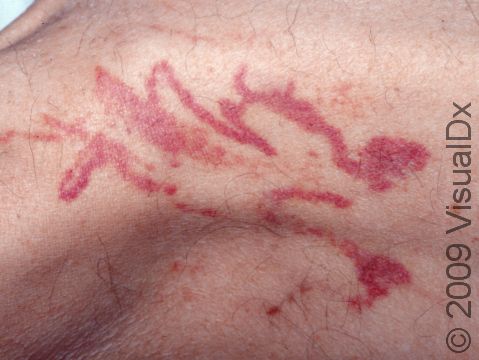Jellyfish Stings, First Aid
Jellyfish are aquatic invertebrates that can sting people who come into direct contact with them. A jellyfish is usually bell shaped with suspended tentacles. It opens and closes its bell-like body to move through the water. The stingers, typically located on the ends of the tentacles, contain toxins that can be harmful to humans.
While most jellyfish are not especially dangerous to people, some are extremely toxic. Jellyfish sting reactions can range from mild irritation to painful, serious injuries or even death.
Although the Portuguese man-of-war is not actually a jellyfish but rather a colony of small, predatory animals (hydrozoan), due to their similarity with jellyfish, this information applies to Portuguese man-of-war stings as well.
Who's At Risk?
Stings from jellyfish most often occur in salt water while swimming or wading when a person accidentally encounters the jellyfish. Stings from some jellyfish may occur if a person touches a jellyfish that has washed onto the beach (even if the jellyfish is dead) or detached tentacles in the water. Certain jellyfish tentacles that have become detached are still capable of causing stings for 2 weeks or more. Jellyfish stings sometimes occur in fresh water as well.
Signs & Symptoms
The sting of a jellyfish may appear swollen, red, purple, or brown and may bleed. The affected area may burn and feel painful.
Additionally, the person who has been stung by a jellyfish may experience:
- Nausea or vomiting.
- Paralysis.
- Sweating.
- Weakness.
- Difficulty breathing or swallowing.
- Chest pain.
- Muscle cramps.
- Diarrhea.
Pain in body locations that were not stung, such as the groin or armpits.
Self-Care Guidelines
First Aid Guide:
Avoid further injury by wearing gloves and protective clothing (or any readily available barrier) before attempting to remove jellyfish stingers from yourself or others.
- Remove the affected individual from the water.
- Remove stingers or tentacles with fine tweezers or a gloved hand.
- Wash the affected area with salt water.
Some self-care measures will help some jellyfish stings but cause an adverse reaction in other types. For that reason, the following actions should be avoided without advice from a medical professional.
- DO NOT wash or soak the affected area with fresh water if the injury occurred in salt water.
- DO NOT apply vinegar, baking soda, urine, alcohol, or meat tenderizer / water solution to the affected area.
- DO NOT rub or apply pressure to the affected area.
Treatments
In the case of some jellyfish stings, such as a sting from the box jellyfish of Australia, an antivenin may be necessary to treat the symptoms of anaphylactic shock.
The treatment may vary depending on the type of jellyfish sting. General treatment measures for most jellyfish stings include:
- Immerse the sting area in hot water until pain is relieved.
- Remove tentacles and stingers (if still present).
- Administer pain reliever and medication to treat itching.
Visit Urgency
Seek medical care if the person stung is having difficulty breathing, is bleeding profusely, or other body-wide (generalized) symptoms are occurring, such as:
- Nausea or vomiting.
- Paralysis.
- Profuse sweating.
- Weakness.
- Cramps.
- Diarrhea.
- Pain in an area not directly affected by the jellyfish sting, such as the groin or armpits.
Trusted Links
Last modified on August 12th, 2024 at 3:37 pm

Not sure what to look for?
Try our new Rash and Skin Condition Finder
